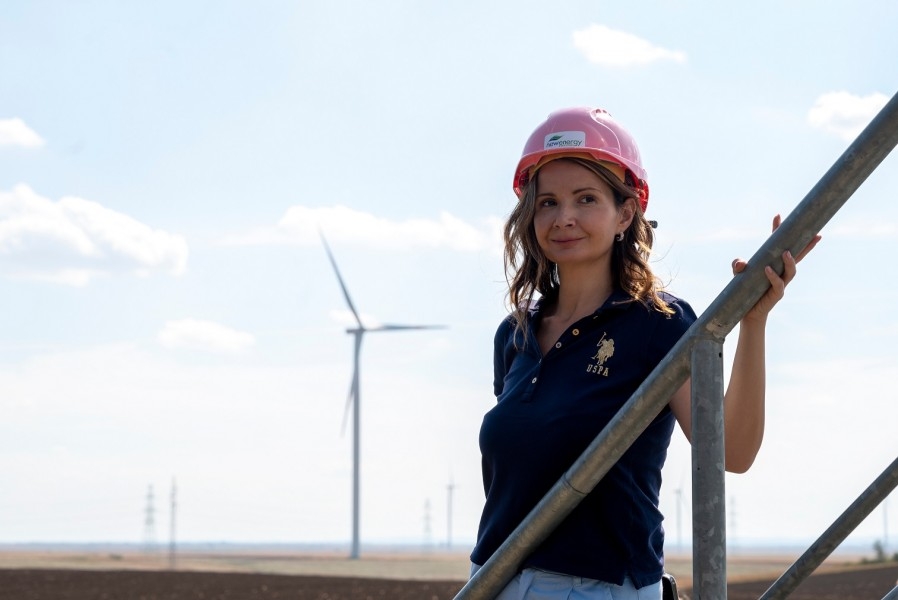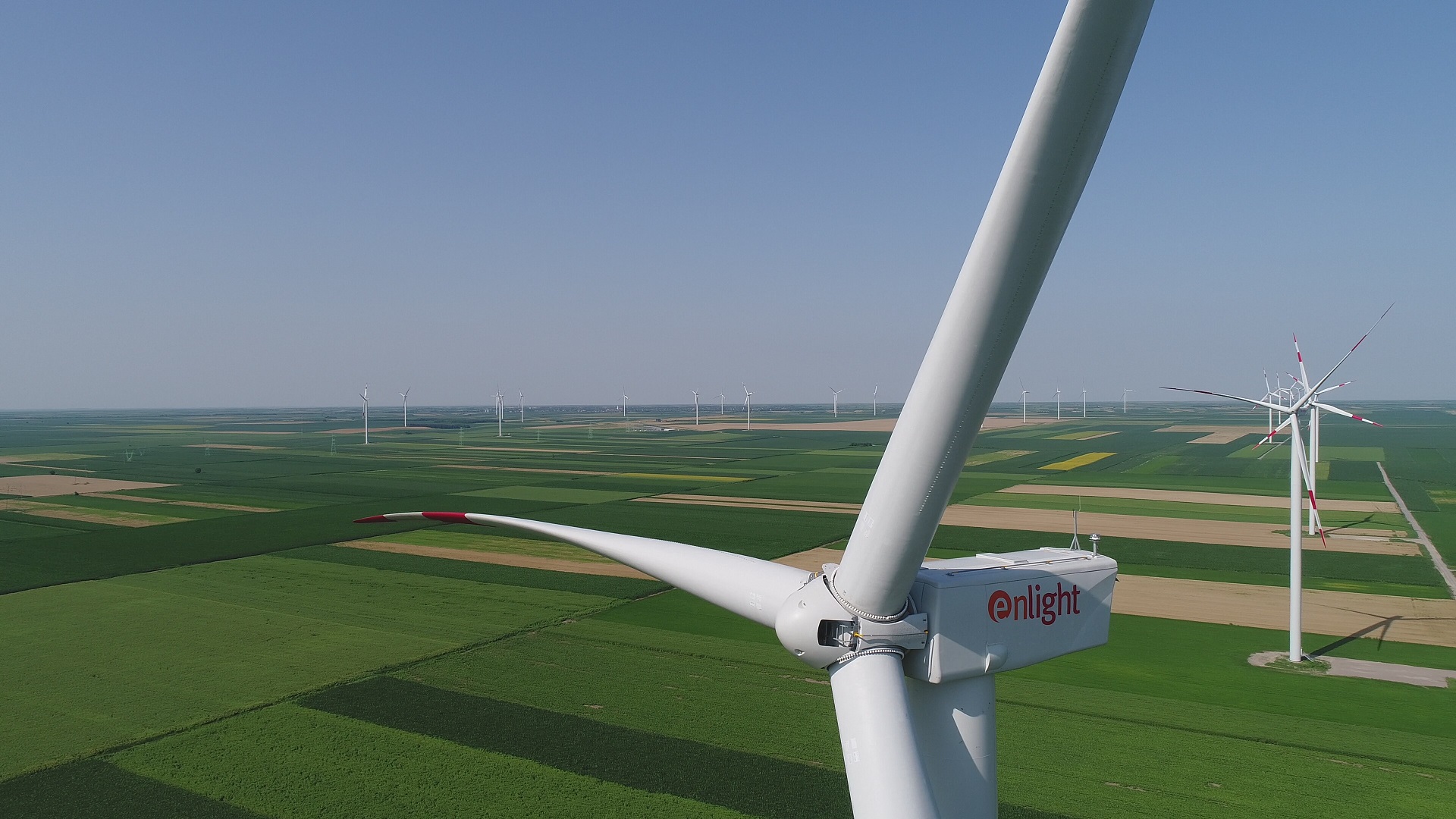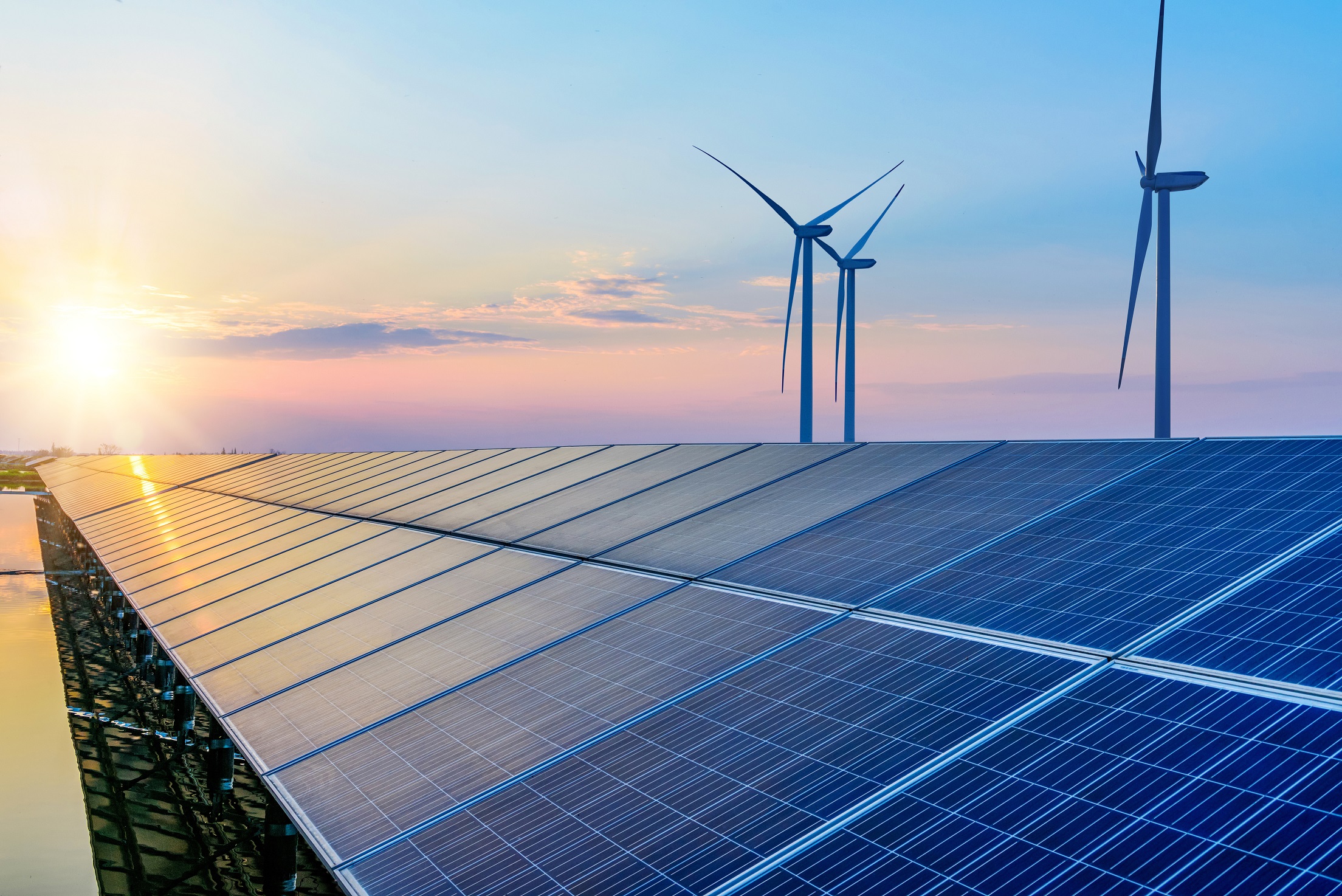 Photo: OIE Srbija (Danijela Isailović)
Photo: OIE Srbija (Danijela Isailović)Before the global crisis, Serbia started drafting a key framework – the Integrated National Energy and Climate Plan. It is a strategically important document that should define the state’s policy and goals in the RES for the period through 2030, with projections by 2040 and 2050. On how we deal with energy challenges in the meantime and whether the energy crisis will slow down the energy transition that has begun, we talk with Danijela Isailović, General Manager of the RES Serbia Association, whose founders are the largest producers of green energy in Serbia.
RES Serbia is a young but very influential association. What would you single out as the biggest achievements in these less than two years since its establishment?
The Association Renewable Energy Sources of Serbia was founded in February 2021, with the support of the European Bank for Reconstruction and Development. The success lies in the fact that we were founded at the time of the worst pandemic, when many businesses were shutting down. Our founders are the largest operational wind farms in Serbia (Čibuk1, Kovačica and Alibunar), and our members are the largest producers of solar energy, the largest prosumers, wind farms under development, biogas power plants, contractors, lawyers and consultants. Our member is also the Public Enterprise Electric Power Industry of Serbia (JP EPS), which indicates that our members are also the owners of the largest hydroelectric power plants in Serbia. The slogan of our Association is Synergy of Green Energy and is reflected in the unity and mutual respect of the members. We are the first WindEurope member from Serbia and one of the few from the region. There is a signed Agreement on Cooperation with the Ministry of Mining and Energy, and we have good cooperation and communication with JSC Elektromreža Srbije (EMS AD). We are happily seen as panelists and moderators at the most important domestic and regional events.
 WIND FARM KOVAČICA
WIND FARM KOVAČICA
You already held the second RES SERBIA Conference, which once again gathered a large number of prominent participants from the country and the region. What were the topics of this year’s Conference?
The RES SERBIA 2021 Conference was the best conference in Serbia and the region in 2021, because due to the pandemic, the business and political elite from the energy sector of the region gathered at one live event, supported by the leaders of WindEurope, the Energy Community and the EBRD. The Conference took place in a very optimistic tone, with announcements of auctions and new investments, in the spirit of the recently adopted Law on the Use of Renewable Energy Sources, while this year’s conference was an opportunity to see what announcements and promises have come true, and how we will proceed further on. Namely, the implementation of the Law on the Use of Renewable Energy Sources failed, no auctions took place, but there was a great misunderstanding between the most important energy factors regarding the future of RES, the speed and manner of integration of RES into the power system. Of course, investors and bankers are not as optimistic and euphoric as last year, uncertainty causes nervousness and there is no time to wait.
How quickly and efficiently is Serbia developing in the direction of the EU and the Energy Community set targets regarding the production of energy from RES? And what is the biggest obstacle on our way – legal frameworks or investors' interest?
According to official Eurostat data, Serbia reached a share of 26.3 percent of RES in the energy mix, which is very close to the target of 27 percent, in 2020. This is an excellent result, but we must not forget that large hydropower plants that are half a century old are responsible for this, and that wind farms which, due to the investment boom and good legislation, built in the period from 2016 to 2019, represent a small percentage. The calculation of biomass contributed singificantly to this result, while the share of solar, biogas and other technologies is minor.
When we talk about obstacles, the biggest problem currently is the uncompleted legislation and the disagreement of the state authorities regarding the issue of balancing. Of course, there is also the low price of EUR 56 per MWh for electricity produced from wind, which is unsustainable in the era of rising prices for equipment, transport and the fact that the price of electricity on the stock market is several hundred euros. At that price, the state of Serbia also imports electricity because the current production does not cover our needs. Of course, there is also the problem of the double auction premium, which reduces the possibility for competitiveness and achieving a lower price.
There is no problem with a lack of investors, on the contrary, we have a problem with the hyperproduction of investors and projects. Such a false picture reflected in 14 GW, in requests for connection to the transmission system caused a collapse and fear with the transmission system operator that the system will crash, which practically blocked the realization of RES projects. In order to relieve the Electric Power of Serbia (EPS), a selection of projects should be carried out in some way and make an assessment of the projects that have a high probability of being built and see who are solvent investors. This can be done by introducing bank guarantees or some other mechanisms, as has happened in other countries of the region. If the current practice continues, that anyone, without any financial deposit or guarantee, can apply for connection, we will remain blocked and will not have new green kilowatts on the network for a long time.
If we exclude the hydro potential, from which we get 80 percent of electricity from RES, what are the other renewable sources where we are seeing the greatest expansion in exploitation currently in Serbia?
In the period from 2015 to 2020, seven wind farms with a total power of 398 MW were built and these are power plants in operation. Due to the uncompleted legislation, there are no new wind farms. The fact that JP EPS has finally started the construction of the Wind Farm Kostolac, with a power of 66M W, is pleasing. It is great news for all of us.
If we are talking about expansion at the current moment, then it is definitely solar energy in the form of small solar power plants on the roofs of houses and larger solar power plants on the roofs of industrial plants. Due to the expected increase in the price of electricity, especially for the economy, as well as due to the uncertainty of whether there will be electricity at all, citizens, and especially industrial giants, decide to become prosumers, that is, to build solar power plants for their own needs. Mass solarization of Serbia is underway and this trend will not stop, thus everyone who has the opportunity to use the solar potential of their roof should do so. Of course, there are complaints about the efficiency of the distribution system operator, but I believe that there is no malicious intent, but rather the run-in of a new procedure.
 SOLAR PROJECT ARE CURRENTLY EXPERIENCING AN INVESTMENT BOOM
SOLAR PROJECT ARE CURRENTLY EXPERIENCING AN INVESTMENT BOOM
Are there any big projects planned as part of this investment boom in the solar field?
Prosumers are not necessarily small projects. For example, one of our members is building an 8.4 MW solar power plant for the needs of an industrial giant that has production in Vojvodina. The investment in a solar power plant of EUR 12 million is not small. When it comes to large solar projects, EMS AD is overwhelmed with requests. According to some of our estimates, only a small number of projects have the potential to be built. I am not sure that large solar projects in Vojvodina or other parts of the country that are planned on fertile agricultural land have a perspective and that someone will allow food to be converted into energy, unless they are agricultural solar power plants. Of course, there are also the aspects of environmental protection, and we will see who and how will provide land for large solar projects. I think that we will have to wait for some time for the construction of large solar power plants.
Solar energy could be an efficient long-term solution for supplying energy to cities, given that the prosumer regulation has been passed. How much do we use this possibility?
We currently have more than 100 individuals in the register of prosumers, that is, more than 100 roofs above our heads that produce electricity from the Sun. I believe that there are several thousands more in preparation. I am happy to know that a social protection institution from Sremska Mitrovica, the Social Welfare Center Sava, became one of the first prosumers and built a 5 kW power plant. Our members built two solar power plants for the needs of monasteries and churches in Niš and Kraljevo, even before the introduction of the prosumer concept, which indicates that the Church recognized the importance of green energy.
Unfortunately, no residential community has yet registered in the Register of Prosumers. It is a great pity that buildings do not use their flat roofs for solar energy production. However, knowing how tenant assemblies cannot often agree even on the repair of elevators, I do not expect solar panels on buildings to spring up soon, unless local self-governments and the state provide some significant incentives. Apart from money, I think the problem is insufficient awareness of citizens about the benefits of green energy. I believe that new buildings in the future will include solar panels on the roofs during the design process.
In addition to incentives from the state and local self-government, I believe that banks could also provide more favorable loans for such green construction. There are already EBRD programs and credit lines implemented by commercial banks in Serbia, specifically for the implementation of projects in the field of energy efficiency and the construction of solar projects.
I believe that the legal obligation to install solar power plants on new buildings would be stimulating. Such a possibility is foreseen by RePower EU, as the EU plan for accelerating the energy transition, which was presented in May this year. That plan envisages installing solar panels on all public buildings where possible by 2026 at the latest, i.e. on all new buildings from 2029. Of course, the EU has allocated as much as EUR 300 billion for the implementation of the RePower EU Plan. I am sure that we can also use the solar potential of our public institutions and install solar power plants at schools, hospitals, and city administration buildings.
The current energy crisis caused by the war in Ukraine has made even the most developed countries take several steps back on the road to carbon neutrality, as many will be forced to revert to coal-fired power generation. How do you foresee the further development of the energy situation in Europe and Serbia?
Energy and security crises have disrupted the entire world. It is logical that everyone is making crisis plans and that going back to coal is part of the crisis scenarios. I don’t believe that anyone under the slogan of decarbonization will leave their citizens without electricity and heating, but it is clear that the decision and the act of firing up coal burning furnace are being waited until the last moment. What I see is that the leading European countries are working intensively on the construction of wind farms and solar projects even without the RePower Plan.
Germany, which is Serbia’s economic role model, generates most of its electricity from wind energy. Only in the second quarter of this year, the delivery of equipment for wind farms with a total capacity of more than 900 MW was agreed for the needs of investors in Germany. The most powerful countries rely largely on independent sources of electricity supply. As for Serbia, I believe that the country is behaving responsibly and I believe that the winter will pass without restrictions. However, no one knows how long the war will last and what the consequences will be for years to come. That’s why I think we should follow Germany and use the wind energy potential we have, and build new projects as soon as possible. Mass solarization of houses and factories should be further encouraged. Of course, there are also hydro potentials that provide us with at least a third of the electricity we need. It is good that intensive work is being done on the development of the Pumped Storage Hydropower Plant Bistrica and HPP Potpeć and that the construction is planned. Of course, the dominant energy source is coal, which we are running out of, so we rely on imports, which in security-challenging and politically complex times is not just a commercial business, but is neither easy nor safe, no matter how hard those responsible in the state try.
CROATIA AS AN EXAMPLE
Croatia is a good example to learn from. Auctions for RES projects were recently held in Croatia. Only three investors applied for 300 MW of wind with projects with a total power of 113 MW, while only two projects with a power of 78 MW were successful at the auctions. The maximum defined price was 61 euros per MWh plus inflation indexation and certain extras for balancing costs, which are far better conditions than the specified maximum price in Serbia. The premium model is also double-sided as it is here.
However, we must admit that the auctions failed. Will something like that happen here? Quite probably. In order for this not to happen, while we still have time, it would be necessary to change the methodology for calculating the maximum auction price, and then the decision itself, as well as to return the initially foreseen one-sided premium model. And of course, reach an agreement on the method and costs of balancing.
Text: Jovana Nikolić
Photo: RES Serbia